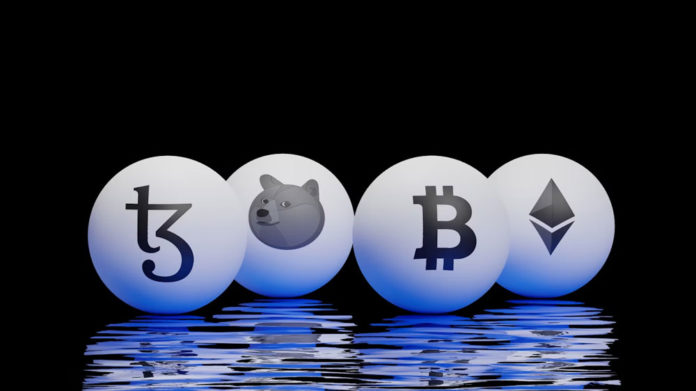Published in cooperation between 99bitcoins.com and the Gilroy Dispatch
Unless you’re planning to buy Bitcoin, when looking at cryptocurrency, it’s not uncommon for a person to not know where to start. Every chart looks incredible, and every whitepaper overpromises on everything, but this can’t all be true, right? Then you hear about “tokenomics”—a term people toss around as the secret to picking winners. Maybe this is the clue you needed.
Understanding how supply schedules, vesting periods and burn mechanisms work can help you comprehend how these new coins function. Good tokenomics can be a cheat code to help you figure out whether there’s an actual sustainable plan or if this is just another pump-and-dump project. In the field of crypto investment, this is nothing short of a survival skill.
Find an Upcoming Coin Listing on Binance
When you’re trying to get a handle on tokenomics, start by checking out an upcoming coin listing on Binance. It’s like browsing the menu before ordering—knowing what’s about to launch gives you a shortlist of fresh projects to dig into without feeling overwhelmed by the entire crypto market.
Additionally, review the whitepaper to understand its information regarding supply limits, vesting schedules and burn strategies. This isn’t just dry reading—it’s the part where you figure out whether the team planned things out carefully or just wants to hype you into buying quickly. It’s the difference between a decent meal and one that’s all garnish.
Don’t analyze it in a vacuum. Select a well-established coin with robust tokenomics as your benchmark. Maybe it’s ETH or BNB—something you know has weathered storms. Comparing a new listing’s plan to a proven model helps you identify gaps or strengths in its design without getting lost in marketing hype.
It’s like learning chess by watching games in progress. You don’t just memorize the rules—you see how they work in practice. Studying tokenomics while tracking a real listing helps you move beyond theory and actually understand how smart investors evaluate new opportunities.
Look for Transparent Teams and Documentation
You can tell a lot about a project by how willing developers are to explain themselves. A clear, detailed whitepaper isn’t just homework—it’s a sign that the team actually thought things through and isn’t afraid of sharing its plan. It’s like reading instructions before building furniture so you don’t end up with leftover screws.
Additionally, openly laid-out supply schedules make a significant difference. No one wants to find out halfway that the team can dump a mountain of tokens at any moment. Transparency here builds trust, as you know what you’re getting into without needing to read the fine print afterward.
Consider if the team members are public. Seeing real people with reputations on the line beats hiding behind avatars and nicknames. It suggests they’re actually invested in making things work in the long term, rather than cashing out early and disappearing. It’s the difference between buying from a market stall and a registered shop.
You see, reliable communication channels matter, too. If you can ask questions in an ask me anything (or AMA) or follow along with development updates, you know they’re not just hyping a launch but building something real. Investors want signs the team will stick around—and good tokenomics alone won’t make up for radio silence.
The Importance of Keeping up With New Trends
Crypto isn’t some fringe curiosity anymore. You hear people talk about tokenomics, non-fungible tokens or NFTs and blockchain like they’re as normal as email or online shopping. This shift in vocabulary is a clue that it’s time to treat these concepts as baseline knowledge rather than niche topics for tech geeks.
Consider how tech that once seemed cutting-edge turns into something you can’t imagine living without. Just like smartphones or streaming services, crypto tools and ideas become normal over time. This means you can’t afford to treat them like a passing fad if you want to invest smartly.
Society doesn’t stay in one place. A hundred years ago, Earth Day didn’t even exist, and now it’s an event recognized around the world. Social dialogue evolves, priorities shift and what once felt unimportant becomes essential. Understanding trends isn’t just trendy—it’s practical if you want to keep up.
If you don’t keep learning, you’re stuck guessing while others use these ideas fluently. Keeping up with new trends in tokenomics or crypto isn’t just about knowing big words—it’s about seeing where things are headed so you can make moves with confidence instead of gambling blindly.
Assess Incentives and Utility for Holders
It’s not enough for a coin to just exist—it has to give people a reason to hold it instead of flipping it at the first spike. Strong tokenomics encourage long-term holding, whether through staking rewards, governance voting or other perks. It’s like a loyalty program that keeps you coming back.
Also, think about real utility. Does the token unlock a service, enable a network or provide access to something people want? Projects with solid use cases create organic demand that goes beyond hype. It’s the difference between selling a shiny collectible and offering something people need every day.
Poor incentives often lead directly to pump-and-dump schemes. If there’s no reward for holding, you’ll see people buying for hype, selling at the peak and leaving everyone else to deal with the crash. Innovative projects design tokenomics to reduce that temptation and keep everyone invested in the same outcome.
On paper, both investors and developers share the same interest: the project’s success. In both of these cases (unless the team plans to pump-and-dump coins), there’s a long-term structure for you to examine.
Conclusion
No, understanding tokenomics won’t tell you which crypto is going to be the next Bitcoin, but it will help you recognize those coins without the potential for success. In other words, it’s one of the methods that will help you filter out all those coins without a long-term plan and help you narrow down your field of interest to those that actually have a shot.















